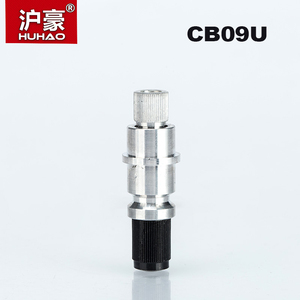
Graphtec CB09 Plotter Cutter 30/45/60 Degree Cb09u Tungsten Blades Cutting Plotter Vinyl Cutter 0.9mm Knife With Spring Holder



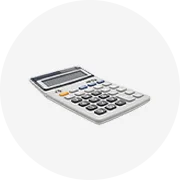
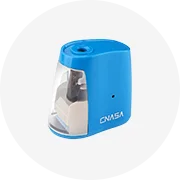
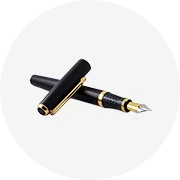
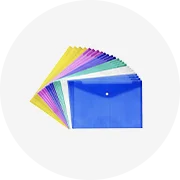
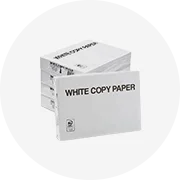
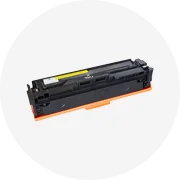
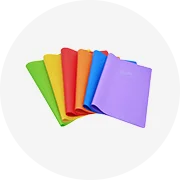
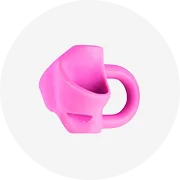
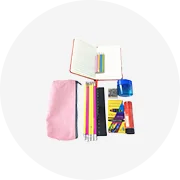
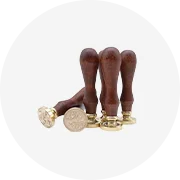
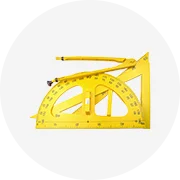
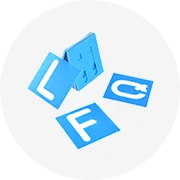
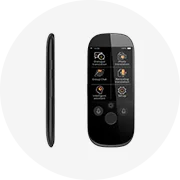
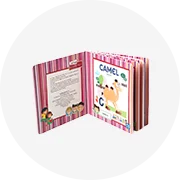
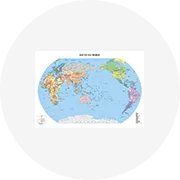

In an era where precision and efficiency are paramount, the right cutting plotter can be a game-changer for your business. With the vast array of options available, it's essential to navigate the market with a clear understanding of your needs and budget constraints. This article delves into the intricacies of cutting plotters, offering insights into their operation, the variety of models available on our platform, and the key features to consider for maximizing your return on investment (ROI). Whether you're a small craft business or a large-scale production house, the guidance provided here will help you make an informed decision, ensuring that the cutting plotter you choose not only fits your budget but also enhances your operational efficiency and product quality.

A cutting plotter is a device that operates similarly to a traditional plotter, but it utilizes a blade instead of a pen to cut materials. The depth of the blade can be adjusted to accommodate different types of material. These devices are particularly adept at creating precise cuts on materials such as paper, mylar, or vinyl, which rest on the plotter's flat surface area.
The precision of cutting plotters is driven by specialized computer software that sends design or dimensional commands to the plotter. This technology has gained popularity among home craft enthusiasts, enabling the creation of intricate designs for activities like cardmaking and scrapbooking. The ability to produce consistent, repeatable cuts makes these machines a valuable asset for producing detailed and decorative paper crafts.
Operating a cutting plotter involves loading a vector drawing into the machine's code generator, which may also function as a drawing tool. Users can select specific lines within the drawing to be cut, and then the machine executes these instructions with precision. Due to their ease of use and affordability, cutting plotters have become an accessible tool for fabrication laboratories (fab labs), appealing to both hobbyists and professional users.
Our platform showcases a diverse range of cutting plotters, catering to various business needs. Compact solutions suitable for smaller formats such as A3 and A4 are ideal for businesses with limited space. For those requiring precision, automated contour cutting plotters streamline the vinyl cutting process. Offerings include fast-speed plotters, which are a boon for operations prioritizing efficiency and speed.
Businesses looking for cost-effective options might consider the factory-priced, wholesale plotters that support A3 size materials and come equipped with digital die-cutting features. Manual die-cutting machines are also available for more hands-on applications, such as cardboard box and paper pressing. For vinyl cutting, there are high-performance plotters designed for quality cuts, available in various sizes, to enhance the user experience.
The range extends to specialized equipment suitable for larger projects, and dual-head cutters that offer advanced functionality for box packaging and die-cutting tasks. For businesses that require precision and detail, cutting plotters with advanced blade technology offer a balance of performance and intricacy. Lastly, models with automatic contour capabilities represent the cutting edge of plotter technology, providing a high degree of automation for DTF applications.
When selecting a cutting plotter, the cutting pressure is a critical feature to consider. A higher cutting pressure enables the device to handle a broader range of materials. Different types of cuts, such as half cuts that slice through the top layer while leaving the backing intact, full cuts through the entire material, and perforated cuts, should be available to accommodate various applications.
The precision of the plotter is also paramount, especially when cutting around corners. The quality of the cut should be consistent, without tearing the media. An optical system for recognizing registration marks is essential for orienting the cutting blade and ensuring accurate starts. A barcode reader is also beneficial for selecting the correct cutting pattern automatically.
Cutting speed and accuracy are additional considerations. Some plotters offer speeds up to 1530 mm/sec and accuracy to 0.25mm, which can significantly impact productivity. For businesses that deal with a variety of jobs, it's important to choose a plotter that can handle diverse materials and offer the necessary cutting precision and speed.

When selecting a vinyl cutter, it's crucial to consider your specific project requirements and budget constraints. Identifying the tasks you'll be using the cutter for is the first step in ensuring you choose a machine that will not only be cost-effective but also efficient and productive for your business needs. The ideal cutter should offer a balance between functionality and affordability, providing the necessary features without exceeding your financial limits.
In the process of finding a suitable vinyl cutter, it's important to weigh the machine's capabilities against its cost. While some models may offer advanced features, these often come at an additional expense. It's essential to evaluate whether these features are necessary for your projects or if a more basic model could suffice. By doing so, you can avoid overspending on functionalities that may not enhance your productivity or return on investment.
Moreover, it's beneficial to consider the long-term use and the potential limitations of the cutter. A machine that offers precision and is built with durable materials can withstand consistent use, which is a vital factor for businesses aiming for longevity and reliability in their operations. However, be mindful of any complexities in assembly or operation that could impact efficiency. Selecting a cutter that aligns with your business's operational capabilities and budget will ensure a wise investment and contribute to the success of your crafting ventures.
Understanding the compatibility between machines and materials is crucial for businesses looking to maximize their return on investment (ROI) when purchasing a cutting plotter. The right pairing ensures efficiency and quality in production, which can significantly affect operational costs and product outcomes. It's important to consult comprehensive compatibility tables to determine which cutting plotters align well with the specific materials your business uses. This knowledge allows for informed decisions, preventing costly mismatches and downtime due to incompatible equipment. By selecting a machine that is confirmed to work seamlessly with your materials, you can enhance productivity and ensure a smoother workflow, ultimately contributing to a better bottom line.
When exploring the diverse range of cutting plotters on Alibaba.com, potential buyers will encounter various models, each with unique features and price points. From compact vinyl cutters suitable for small-scale operations to large-format plotters designed for extensive production needs, the selection caters to a broad spectrum of business requirements. The platform offers a balance between functionality and affordability, targeting businesses that need reliable equipment without a hefty investment.
Businesses looking to handle more robust materials or seeking higher precision and speed might consider options like the advanced laser cutting machinery or the high-speed precision cutting plotters. These machines demonstrate the advanced capabilities available, highlighting the importance of assessing the technical specifications relative to their cost. Alibaba.com's platform facilitates this comparison, allowing users to filter search results by various parameters, including price, to find a cutting plotter that aligns with their financial boundaries and operational needs.
Moreover, the platform showcases specialized equipment tailored for specific applications such as garment printing and t-shirt logo creation. This variety underscores the necessity for businesses to thoroughly evaluate their intended applications before making a purchase. By comparing suppliers, buyers can also gauge the market's competitive pricing landscape, ensuring they secure a cutting plotter that not only fits their budget but also offers the features essential for their business's success.
When considering the acquisition of a cutting plotter, it's crucial to look beyond the initial purchase price. A comprehensive understanding of the total cost of ownership is essential. This includes annual maintenance and the projection of energy consumption costs over the lifespan of the equipment. It's important to account for these additional expenses to gain a true understanding of the investment required.
Financial teams should consider offsetting factors that can affect the overall investment. For instance, tax deductions and depreciation benefits can alter the actual upfront costs. The investment period can also be extended, especially if maintenance isn't an annual requirement, which can ease the financial burden over time.
Moreover, the reliability and performance improvements that come with new machinery can lead to increased confidence in production consistency. By minimizing manual processes, accuracy and repeatability are enhanced, leading to reduced waste and improved efficiency. These factors contribute to a culture of excellence and should be considered alongside quantitative measures when calculating the total cost of ownership for a cutting plotter.

Investing in the appropriate cutting plotter can bring numerous benefits to a business. Unlike traditional cutting methods, modern cutting plotters offer precision in cutting a variety of materials, such as paper, wood, plastic, and more. This precision ensures that the edges are clean and the final product has a professional finish. The ability to produce intricate shapes and patterns expands the creative possibilities for businesses, allowing for more complex designs.
Furthermore, cutting plotters are designed to minimize wear and tear during operation. This results in lower maintenance costs over time, as there is less need for frequent part replacements like blades and pinch rollers. The reduced need for servicing not only saves money but also reduces downtime, enhancing productivity. By ensuring that the start and end points of the cutting material are consistent, cutting plotters maintain the quality of output, which is crucial for businesses that rely on precision.
The contactless nature of these devices also means that there is no damage to the material surfaces, preserving the quality of the material being cut. This is particularly important when working with delicate materials that could be easily damaged by more invasive cutting methods. By choosing the right cutting plotter, businesses can enjoy these advantages, leading to a more efficient production process and a quicker return on investment.
Integration of advanced plotter/cutter systems into manufacturing processes exemplifies businesses that have thrived by selecting the right equipment. Significant time savings have been reported, with reductions in labor hours within the first week of using their new system. This leap in efficiency is achieved without the need for additional accessories, relying on the material's weight and occasionally a repositionable adhesive to prevent shifting during cutting.
The first project with the new plotter/cutter involved creating intricate designs, a task that was completed with remarkable speed and precision. The use of nesting software allowed for efficient material usage, reducing waste and cutting down the time to complete the job from an estimated several days to mere hours. This not only demonstrates the machine's capability to handle large-scale projects efficiently but also highlights the potential for repeat orders to be executed with ease, further enhancing productivity.
Beyond large projects, the versatility of the equipment is showcased in daily tasks. The equipment's repeatability ensures that even if adjustments are needed, such as increasing the cutting pressure, the process remains streamlined. This level of precision and accountability is particularly beneficial for businesses that distribute products globally, as it ensures consistency and quality control.
Choosing the right cutting plotter is a strategic decision that can significantly influence your business's productivity and financial health. Throughout this article, we've explored the critical aspects of cutting plotters, from understanding their functionality and the diverse types available to assessing key features and material compatibility. We've also highlighted the importance of comparing prices and suppliers on Alibaba.com, considering additional costs, and the tangible benefits of investing in suitable equipment. Real-world success stories underscore the transformative impact of the right choice. As you weigh your options, remember that the ideal cutting plotter is one that not only meets your current needs but also aligns with your long-term business goals, ensuring a balance between cost-efficiency and quality output. With the right investment, your business can look forward to enhanced precision, reduced waste, and a quicker ROI, positioning you for success in a competitive marketplace.